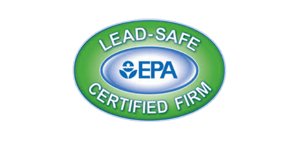Did you know that Americans waste nearly 900 billion gallons of water each year? This is due to leaking pipes, especially under kitchen and bathroom sinks. Learning how to manage moisture under a sink is key to saving water and preventing mold and mildew.
Mold and mildew can grow quickly, within 24-48 hours of water damage. Regular checks on sink parts and water pressure are vital. By doing this, you can keep your kitchen dry and healthy.
Key Takeaways
- Americans waste nearly 900 billion gallons of water annually due to leaks, highlighting the importance of immediate moisture management under sinks.
- Mold and mildew can form within 24-48 hours of water damage, making timely moisture removal crucial.
- Regular maintenance involving inspection of sink parts and checking water pressure can prevent leaks and moisture accumulation.
- Effective solutions to eliminate sink moisture include insulation of pipes, enhancing ventilation, and using a dehumidifier.
- Excessive water pressure can lead to pipe bursts under the sink, necessitating consistent monitoring.
Common Causes of Moisture Under the Sink
Water damage under the sink is a common problem in homes. Knowing the sink moisture causes helps homeowners fix issues quickly. This can save money on expensive repairs.
Several factors contribute to this issue:
- Condensation: Temperature differences between pipes and air can cause condensation. This leads to moisture under the sink. High humidity makes it worse.
- Leaks: Faulty plumbing and old seals are common causes of dampness under sink. You might see drips or puddles around pipe joints.
- Sink Overflow: Water damage can happen if the drain gets clogged. Look for slow-draining water and gurgling sounds.
- Faucet Wear and Tear: Water dripping from the faucet’s base might mean parts are wearing out. This can cause ongoing moisture problems.
To spot moisture problems early, think about putting moisture sensors under the sink. Regular checks and upkeep can also help find and fix issues before they get worse.
How to Prevent Moisture Under the Sink?
Keeping the area under sinks dry is key to a healthy home. Make sure all pipes and fixtures are sealed well. This stops leaks that can lead to moisture.
Regular checks are important to keep moisture away. Look for any signs of moisture under the sink often. Fix any leaks or drips right away to stop moisture buildup.
Controlling the environment is also crucial. Wrap pipes to cut down on condensation, a common moisture cause. Also, good air flow in the sink cabinet helps lower humidity.
Using a small dehumidifier in tight spaces helps keep humidity in check. These devices are great for areas that tend to get moist.
- Proper installation of pipes and fixtures
- Regular inspections and maintenance
- Insulating pipes to reduce condensation
- Ensuring good ventilation in sink cabinets
- Using a dehumidifier to control humidity
By following these steps, you can make your home healthier. And you’ll avoid damage from too much moisture.
Steps for Eliminating Moisture Under a Sink
To stop sink moisture, start by drying any water spots. Use dry paper towels to soak up moisture from pipes, drains, and valves. This step is key to ensure the area is dry before you do more.
Next, check for leaks by running water and looking at all connections. Make sure to check the sink drain, faucet, and any sealants. If you find a leak, replace the faucet or O-rings right away. Knowing your faucet’s model helps find the right parts.
After checking for leaks, seal any gaps around the sink. Use silicone caulk or plumber’s putty to block water leaks. Also, insulate pipes to stop cold air drafts that cause moisture. This keeps the area dry.
If you see water damage like discoloration or a musty smell, act fast. Clean and dry the area with a solution and cloth. Then, dry it well with a cloth or hairdryer. This stops mold, which is harmful and might need a pro to fix.
After fixing moisture, run hot and cold water to check the aerator. Clean the faucet with a solution and cloth to make sure it works right.
By following these steps, you can fix moisture under your sink. This protects your home from water damage. With the right tools and knowledge, even small problems can be fixed fast, keeping your sink area dry and clean.
Conclusion
Water damage under the kitchen sink is a common problem for many homeowners. It can cause wood to rot, warp, or even grow mold and mildew. It’s important to tackle sink moisture issues to keep your kitchen safe and healthy.
Understanding why these problems happen is key. Issues like sink rim leaks and water supply problems can be fixed. By taking steps to prevent these, you can keep your sink dry and worry-free.
Regular maintenance is crucial. This includes checking for leaks and fixing them right away. Simple actions like opening cabinet doors and using fans can help dry out the area. If mold appears, cleaning and using homemade pastes can help restore your sink area.
Having the right tools and knowledge is also important. You can fix many plumbing issues yourself, like clogged drains or leaks. But if the problem is big, getting help from professionals is a good idea.
Preventive maintenance, regular checks, and quick repairs are the best ways to handle sink moisture. By staying on top of these tasks, you can avoid water damage and keep your kitchen safe and functional.



